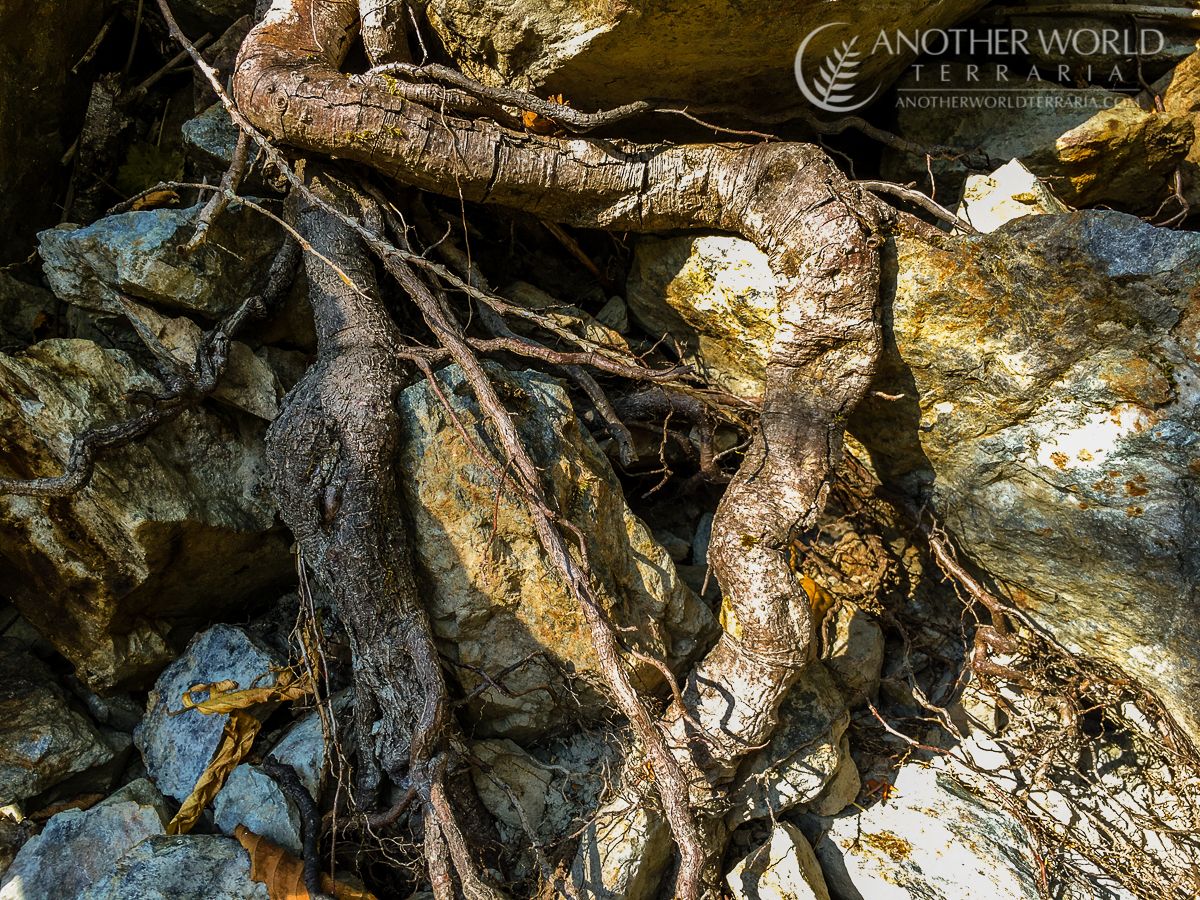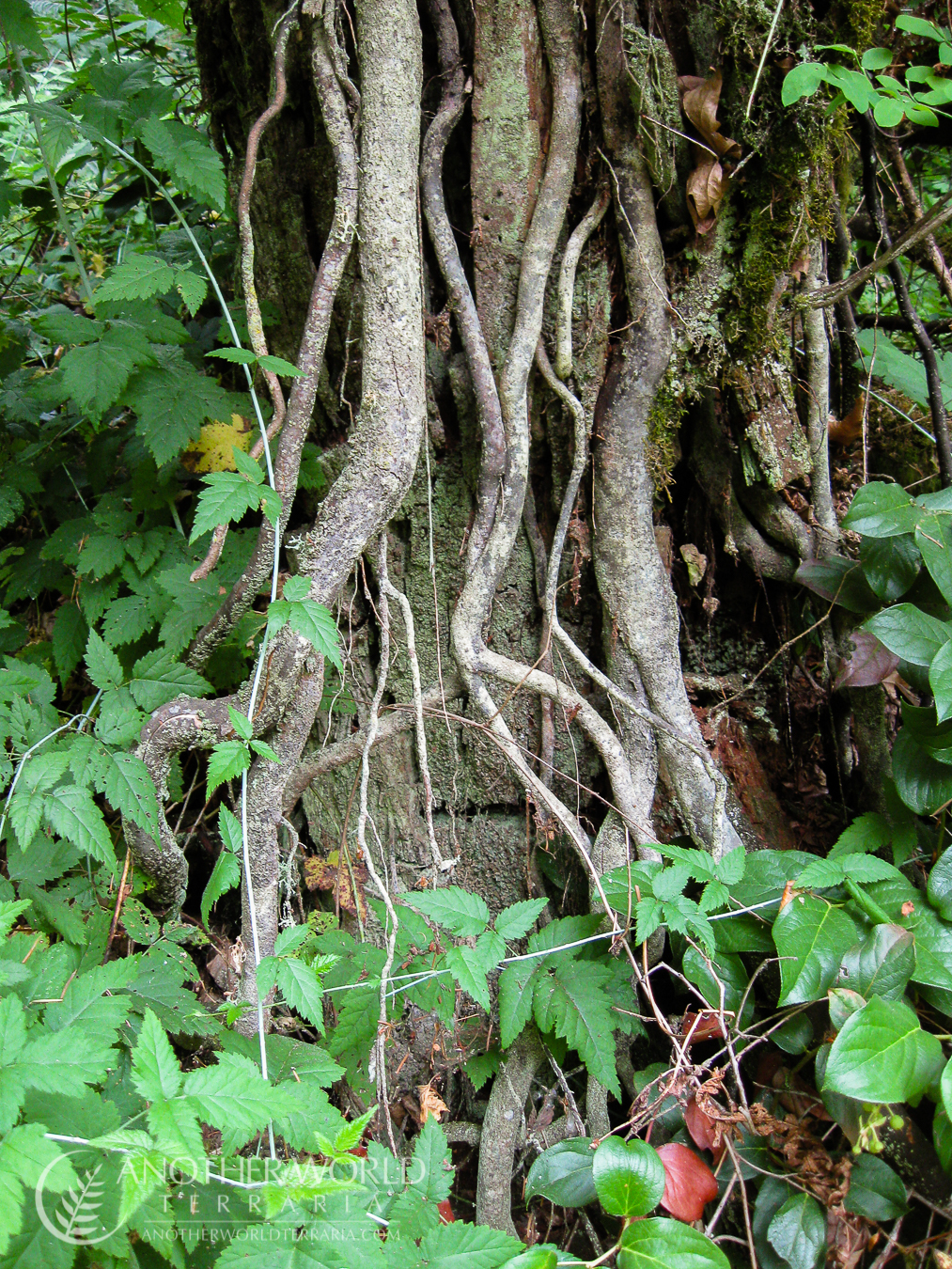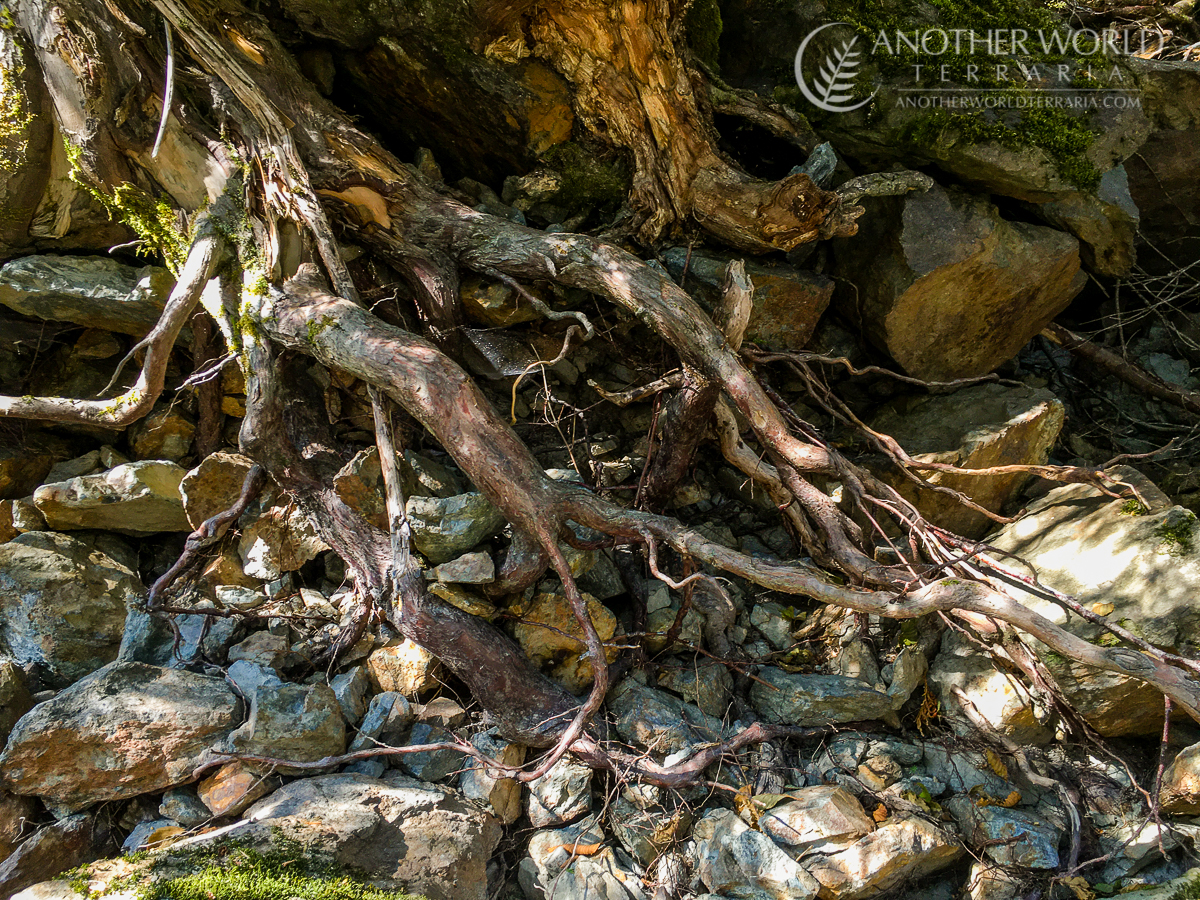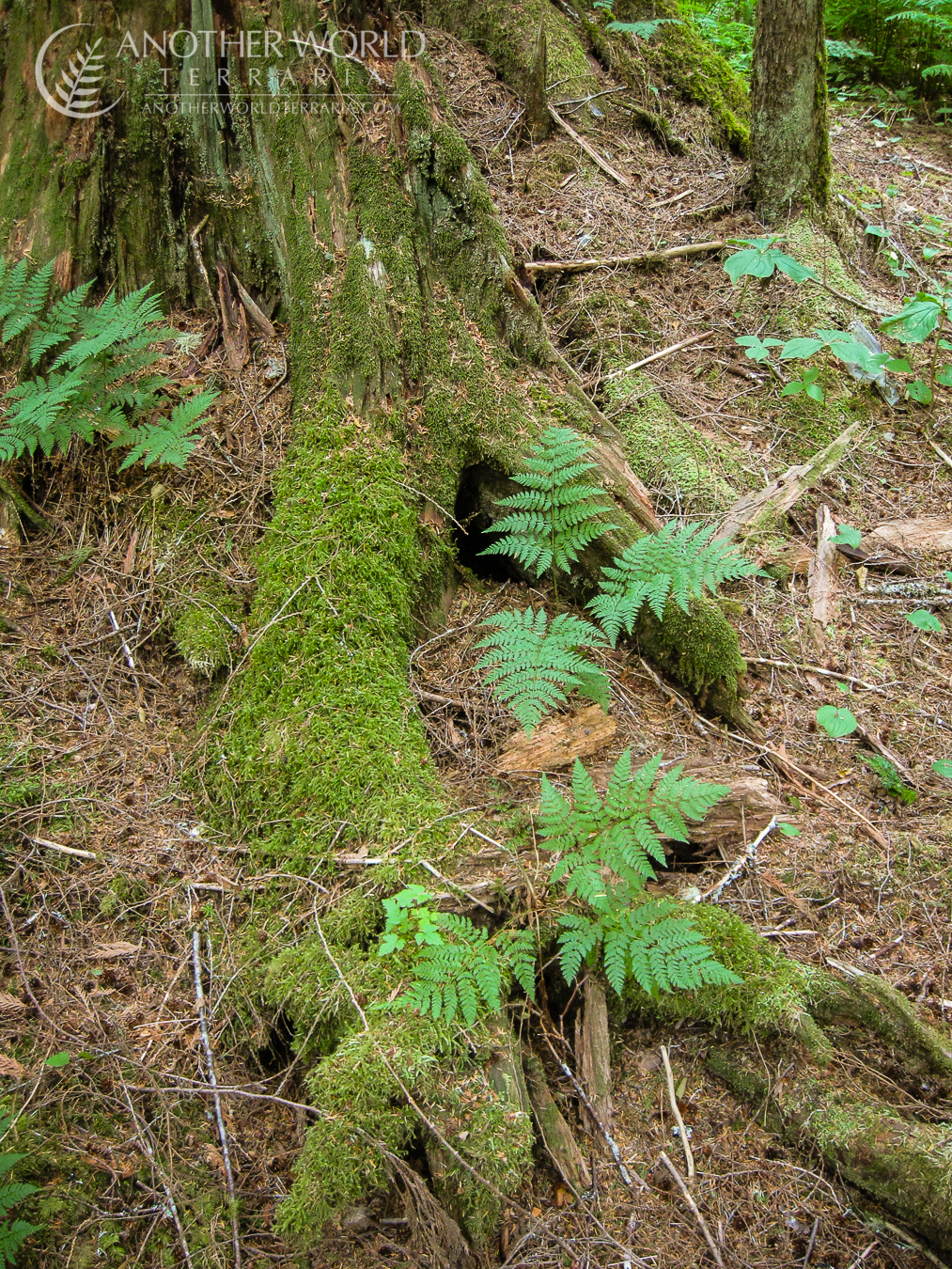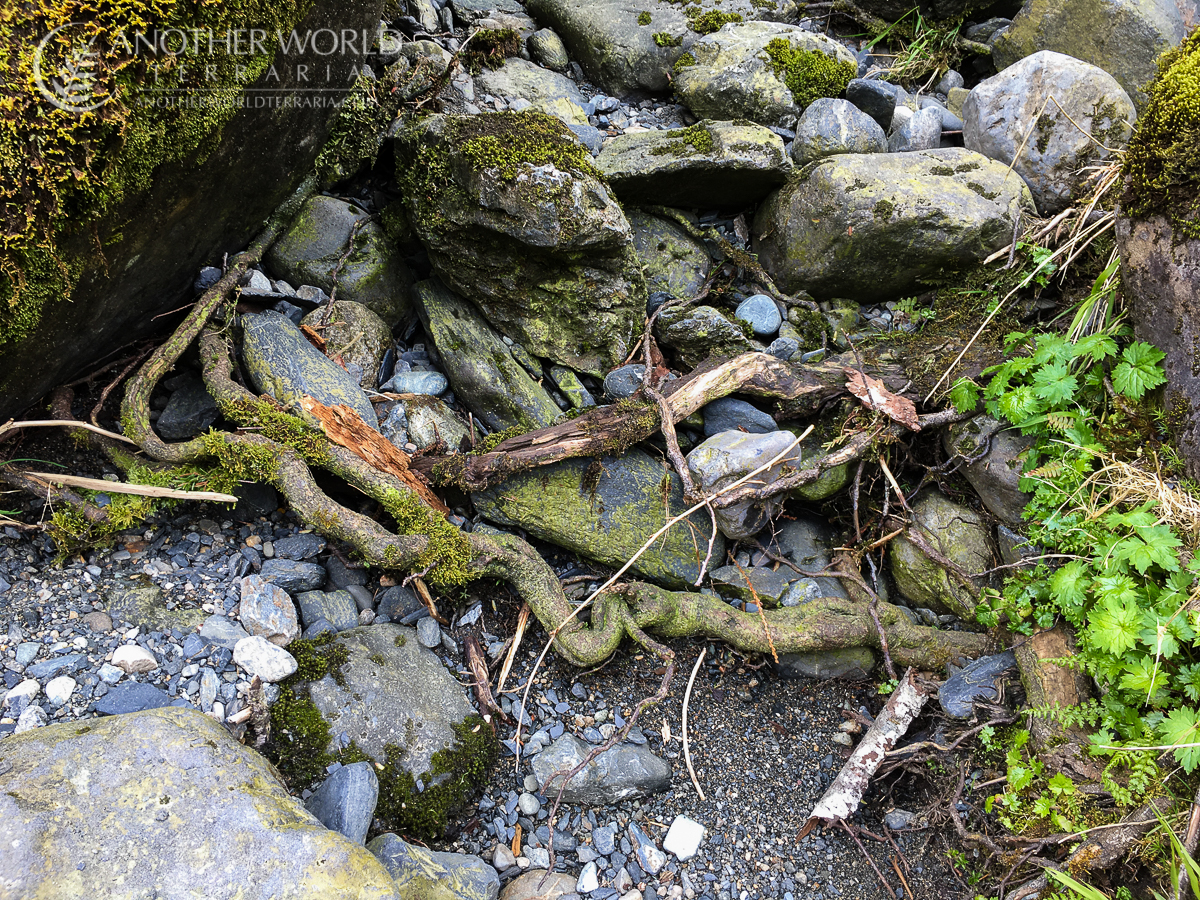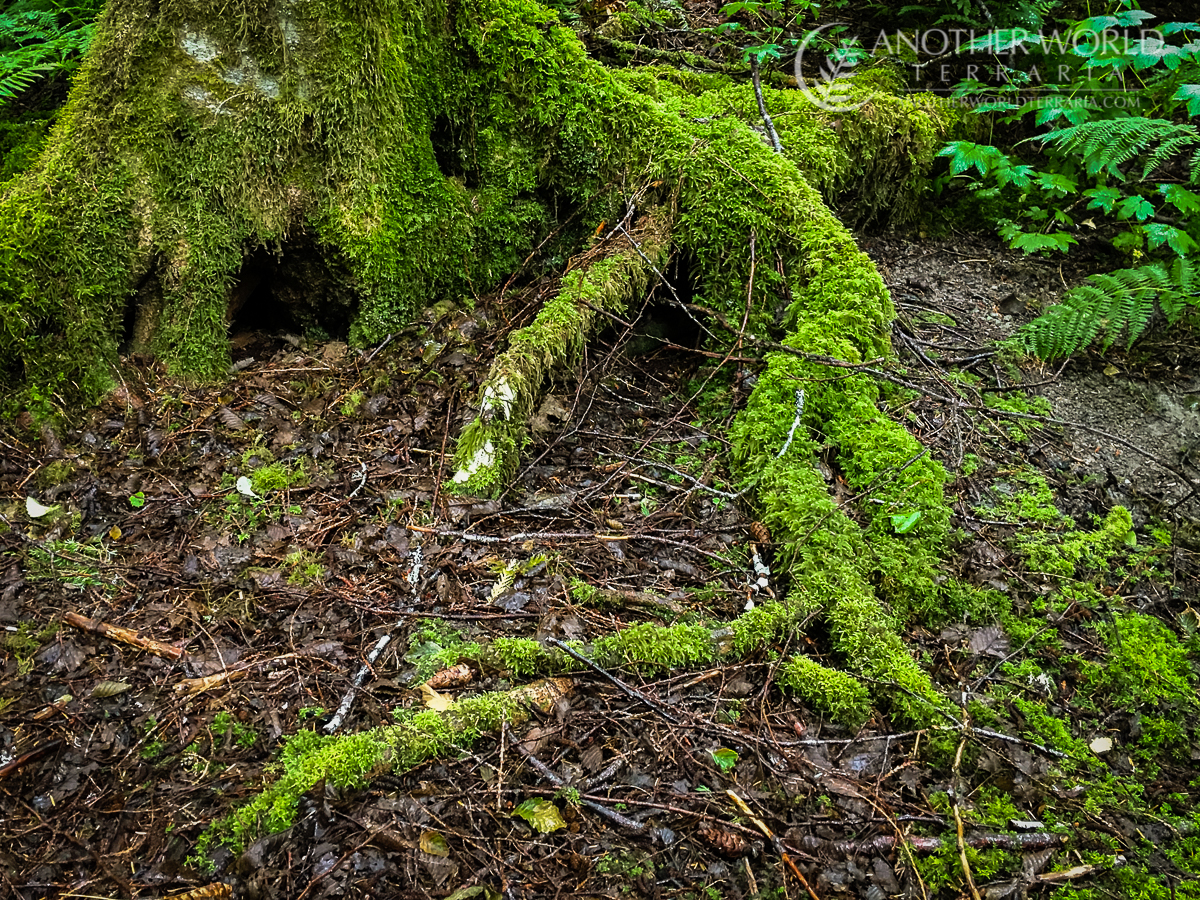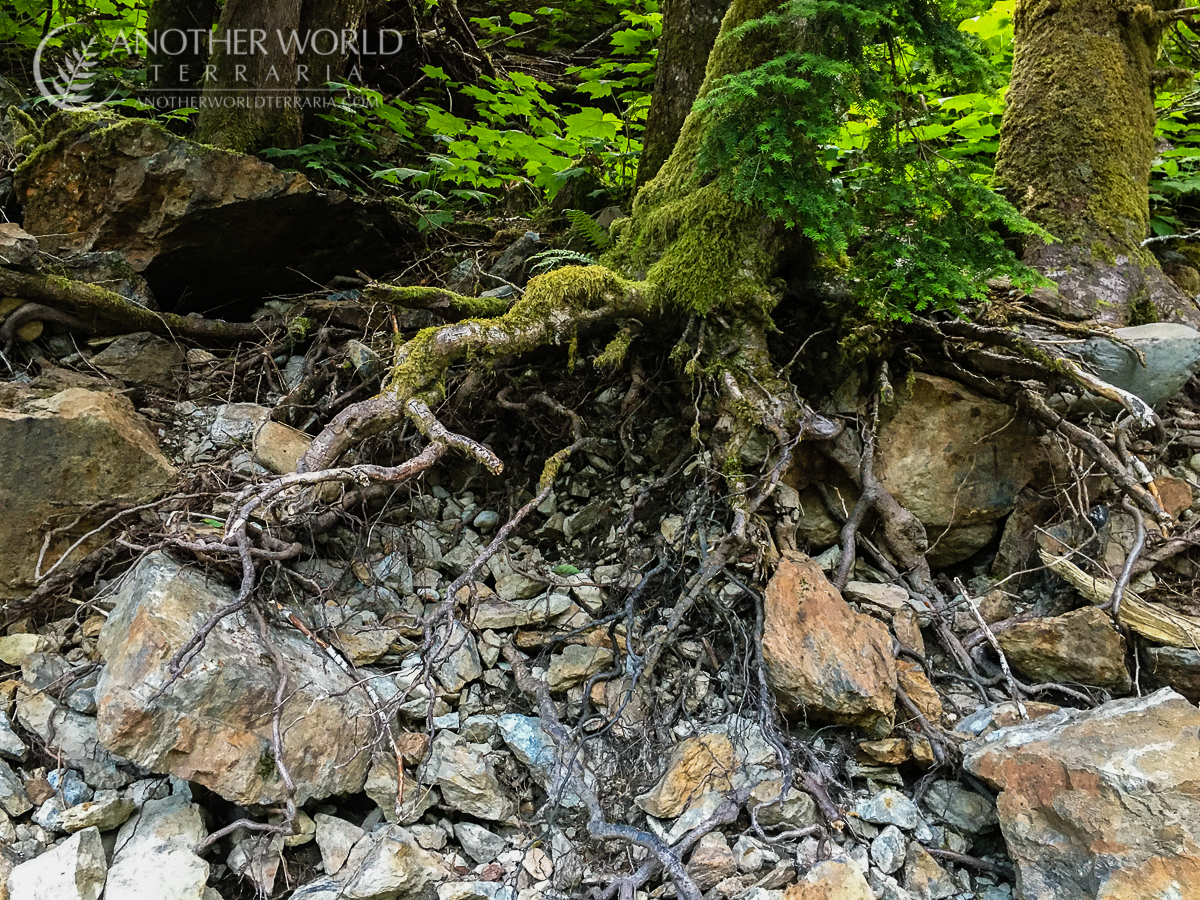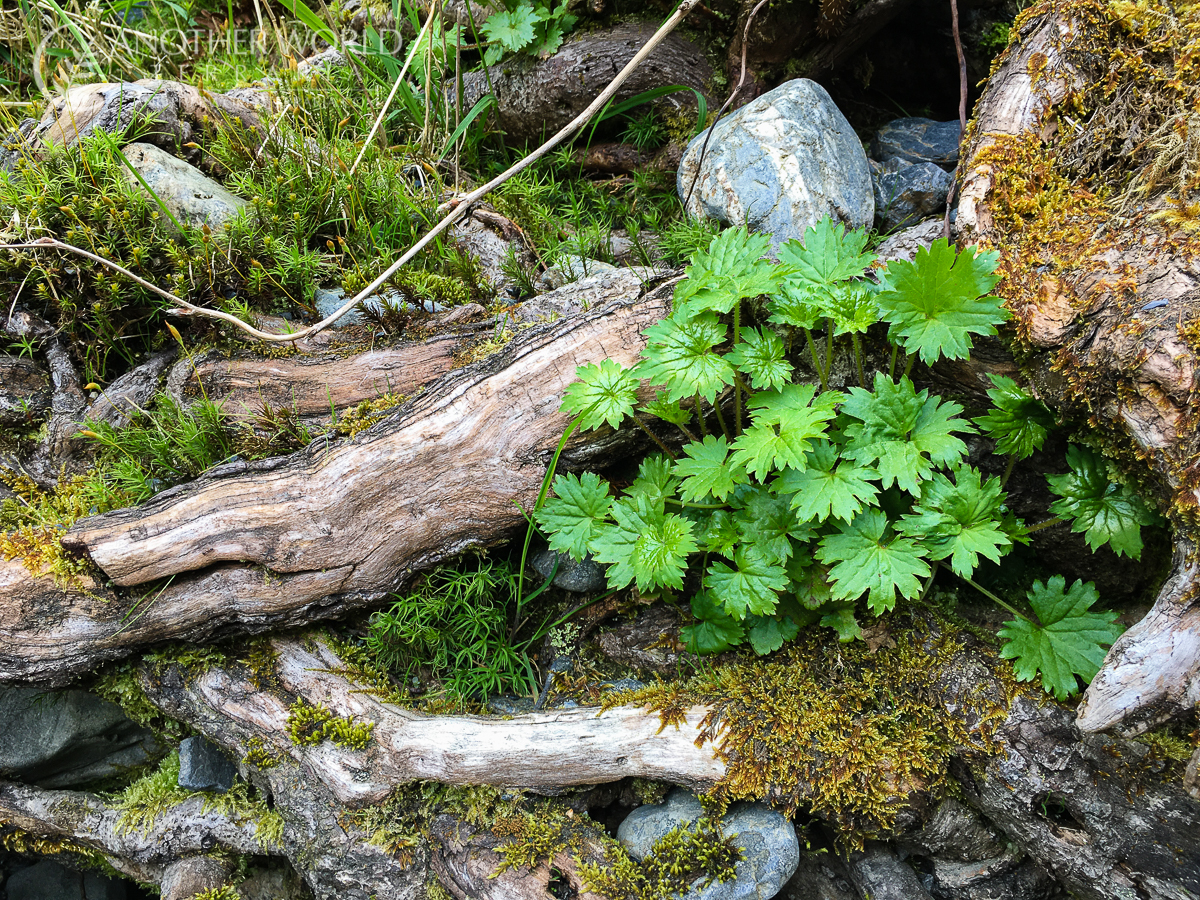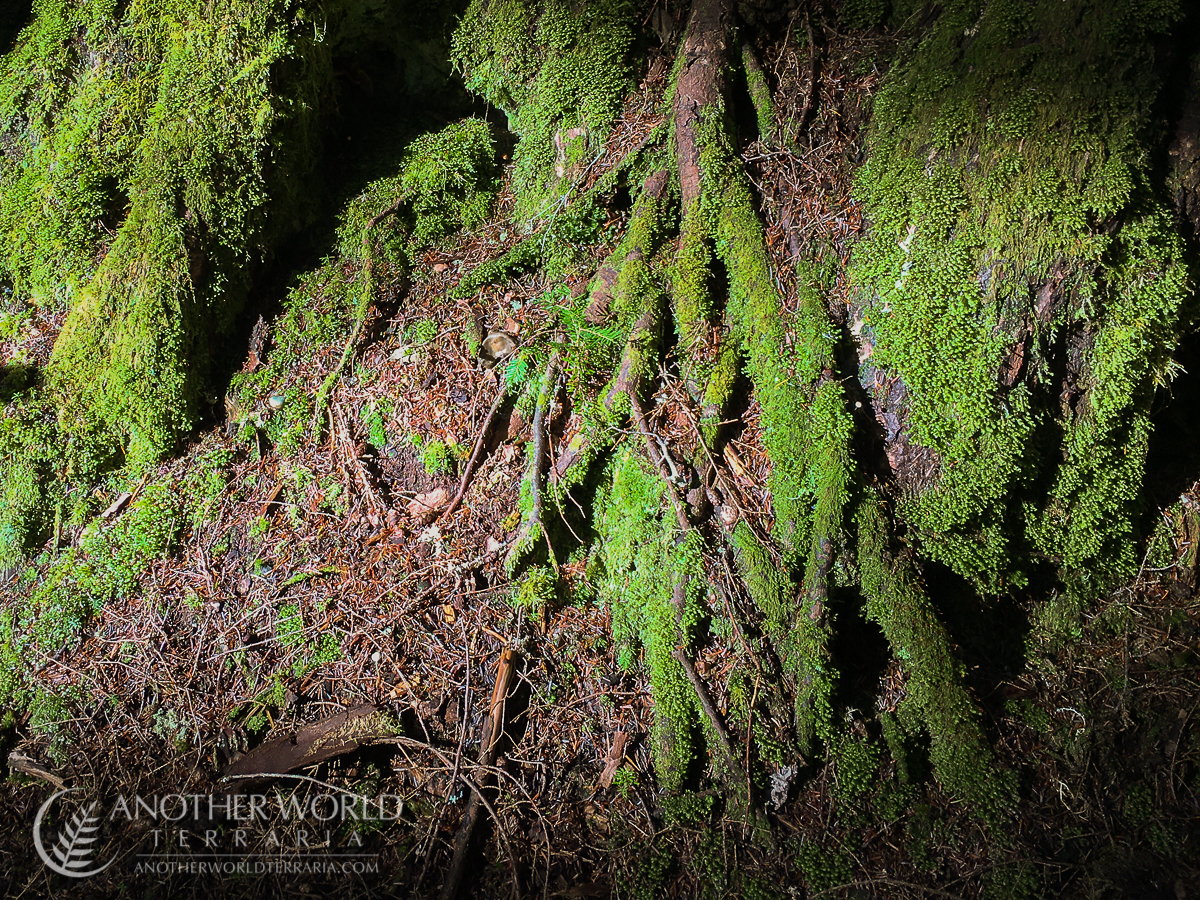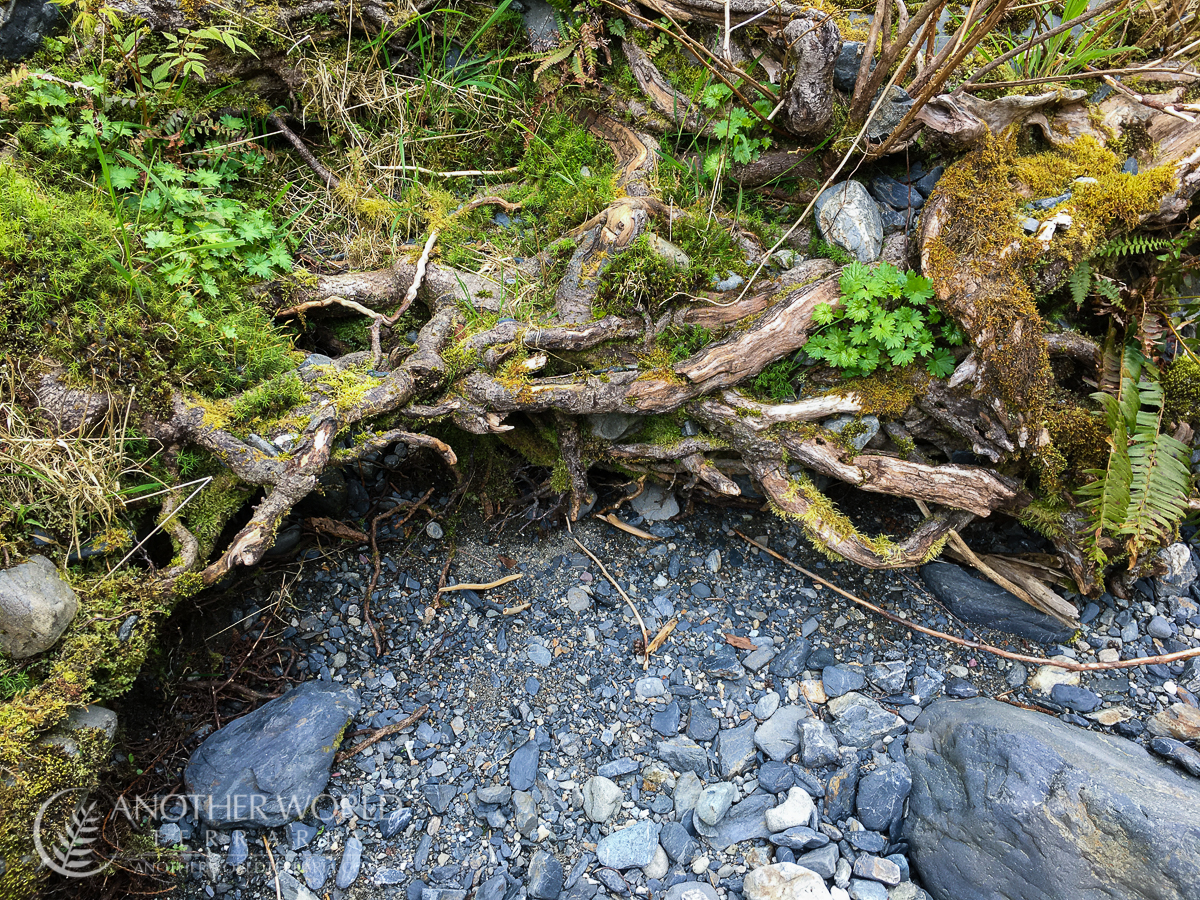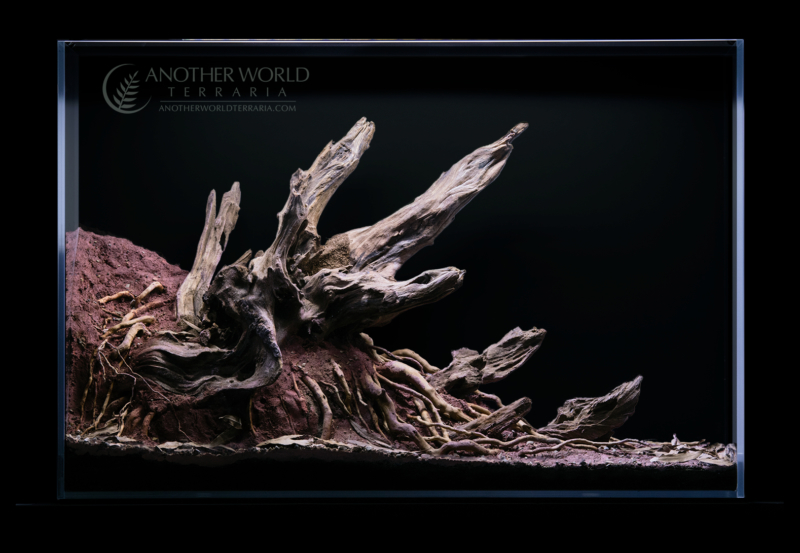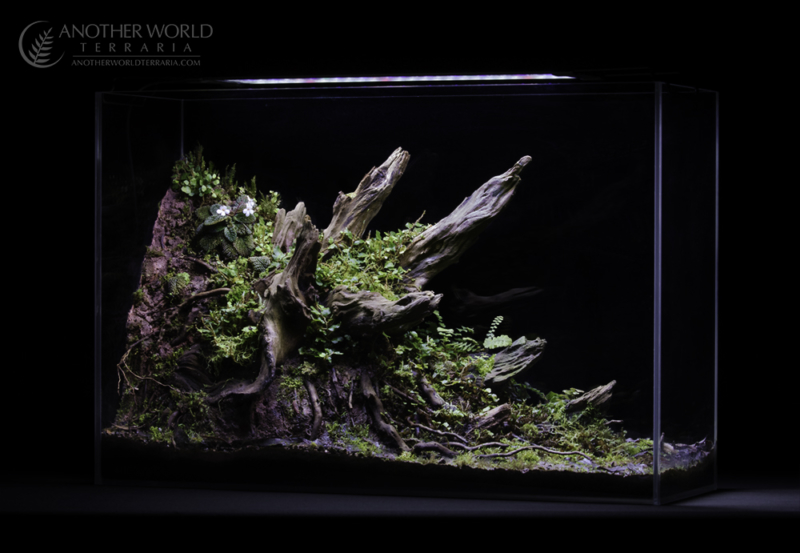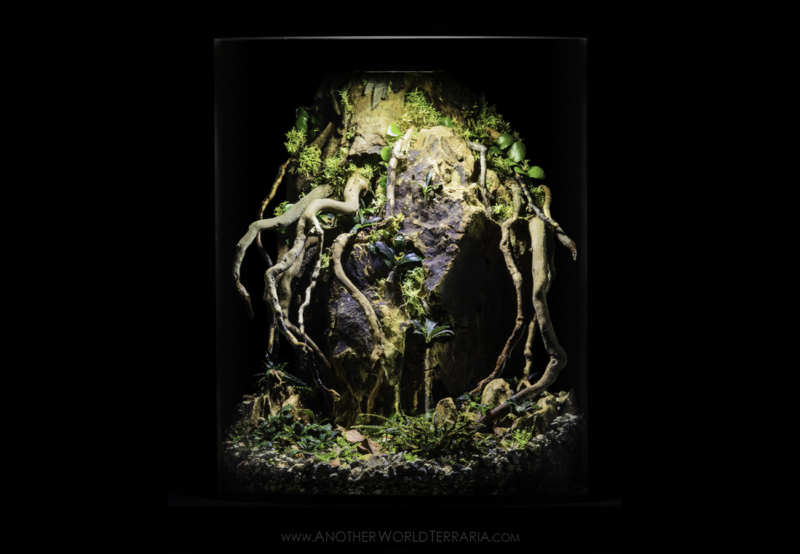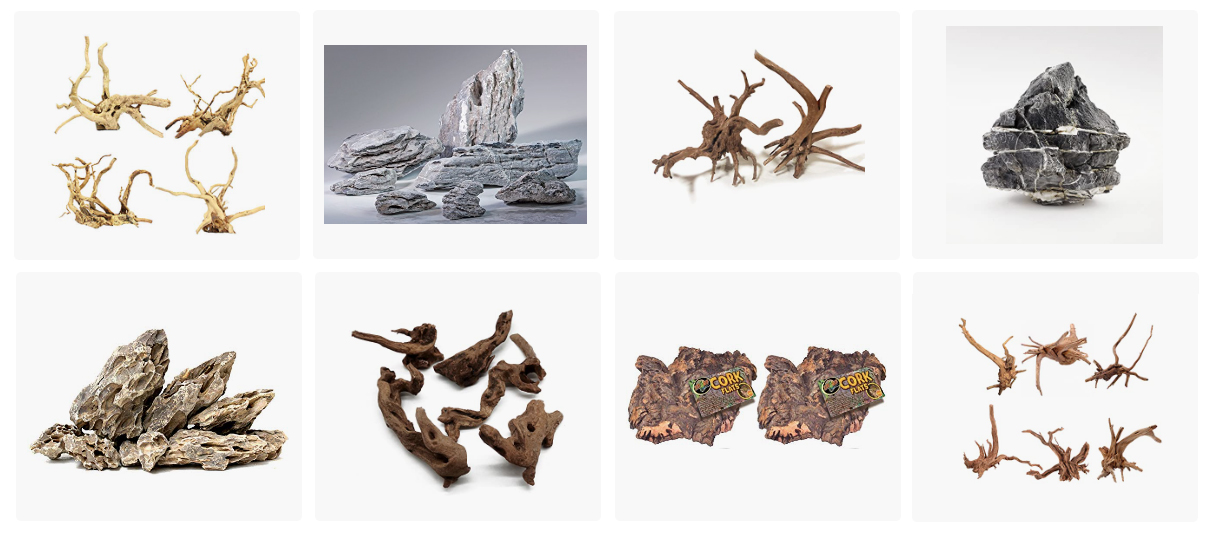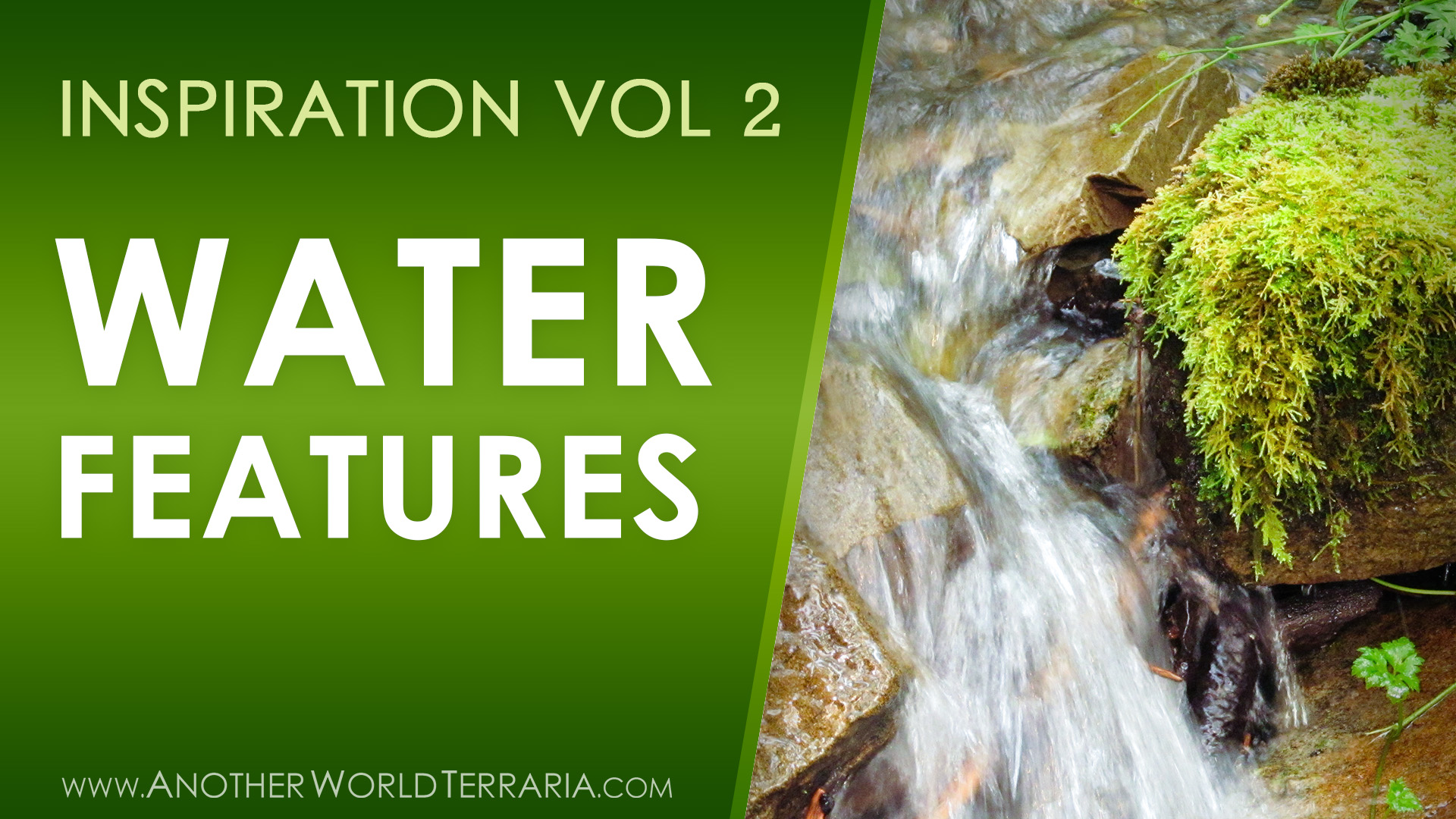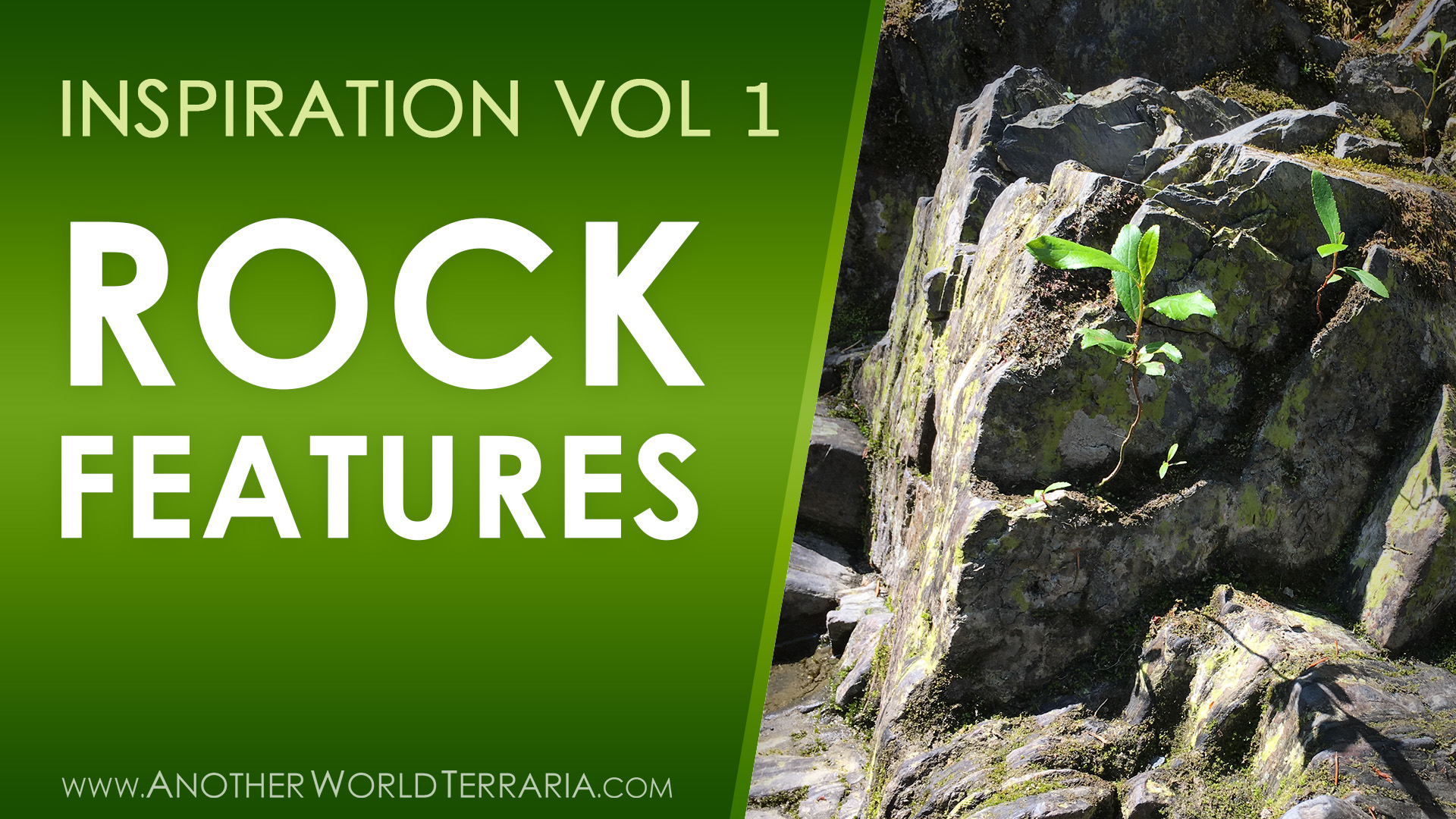Tree and Plant Roots as Terrarium Inspiration
This article contains photos and tips to help you design better terrariums featuring tree roots.
Reference Photos
Tips for Root Scape Designs
When creating terrariums or other nature displays using roots, consider the following:
Choose your wood wisely
- Use hard woods which will last a long time in wet conditions
- Wood which is used for aquascaping (aquariums) is a good choice. For root designs, “spiderwood” is the best I’ve been able to find, due to its appearance, and resistance to rot.
- Avoid using wild-collected, fallen branches, which are decaying, and likely contain pest insects
- Choose woods which don’t have any artificial treatments or chemicals on them
- Avoid types of wood which have naturally occurring harmful chemicals (allelopathic species, and those with strong oils and odors)
Study nature
Observe nature for clues on how to make your designs look more realistic and aesthetically pleasing.
- Use roots of varying thicknesses
- Use some pieces which have a taper in diameter from one end to the other
- Make a good number of the roots travel in similar directions to emulate actual plant root growth
- Find roots which form-fit and wrap around other elements such as rocks and logs
- Vary the direction of the roots depending on the overall layout and concept
Use gestalt theory (and other tricks)
Trick the viewer’s brain into seeing something more than what’s really there, by:
- Using multiple pieces of roots which penetrate the substrate at each of their ends, in a line, thus appearing as one longer root
- Putting moss and plants over spots where separate pieces of roots join, creating the illusion of one root
- Strategically placing roots in such a way that they appear to be one larger root which branches out
- Having roots come out from the base of a larger piece of wood, creating the appearance of a tree stump
Maintain color consistency
Use roots and wood of a similar color and texture throughout the design (unless the design purposely calls for variation)
Scale matters
Choose root sizes and thicknesses which are appropriate for the scale of:
- the terrarium container’s size and shape
- the design concept and overall layout
- the size and type of plants you’ll be using
You can completely ruin the entire design by using roots which are too thick, or not thick enough.
Avoid abrupt angles and crossovers
Although not an absolute rule, you should generally avoid:
- using roots which have branches / offshoots coming off at abrupt or perpendicular angles
- making roots cross over each other at abrupt or perpendicular angles
Right angles inhibit the visual flow of a piece, causing the viewer’s eyes to abruptly pause.
Say no to cut or stumpy ends
Avoid any piece of wood or root which has the following, unless it can be hidden from view in the finished design:
- a flat cut, either on an end, or a main offshoot
- a stubby end which is broken off at a thick point
The above characteristics detract from the aesthetics of the design and can impede visual flow.
See the entire design as a whole
How do the root thicknesses, direction of growth, and so on, interact with the other elements in the design?
Are they effectively conveying the feeling or concept you’re going for?
How do they affect the visual flow?
How to get mossy roots
If you want moss and plants to grow directly on the roots, plan how you’ll keep them moist.
A few options, individually or in combination:
- Glue Hygrolon fabric to some parts of the roots (Hygrolon is hydrophilic; it wicks and holds moisture)
- Mist the roots daily, or use an automatic misting system
- Have the roots touching or coming out of water, or wet substrate, so they’ll soak up moisture
Avoid placing fans and ventilation near the roots
Example Designs
Crown Forest Terrarium
This design features a dramatic tree stump and root hardscape, protruding from a sloped landscape.
Buce Ravine Terrarium
This terrarium focuses on tree roots which have wrapped around a large stone.

